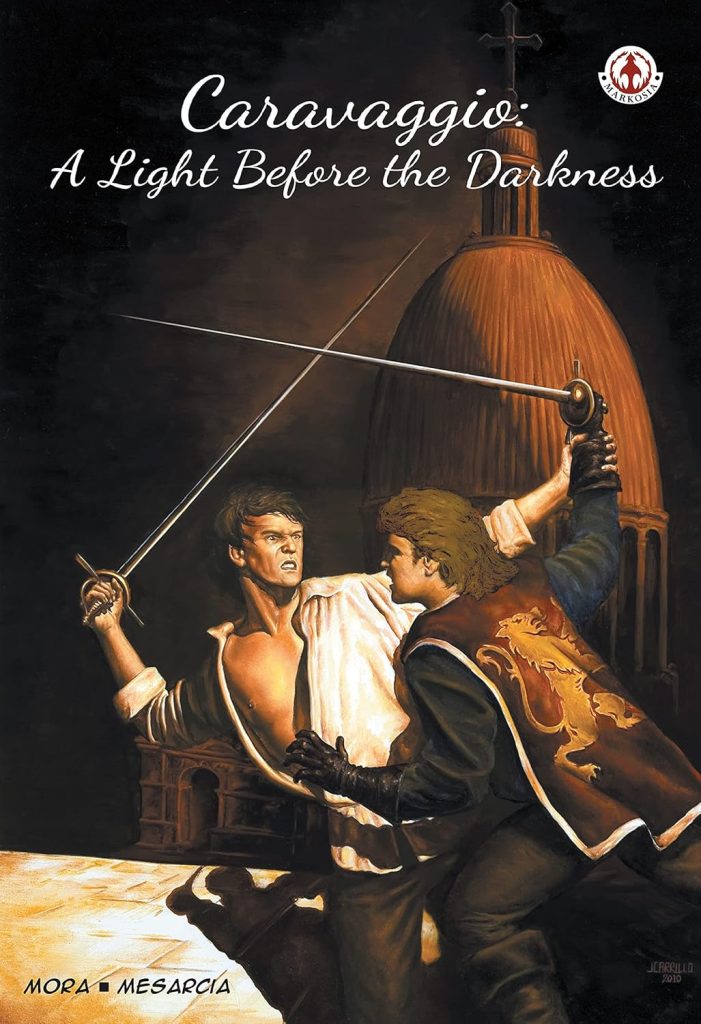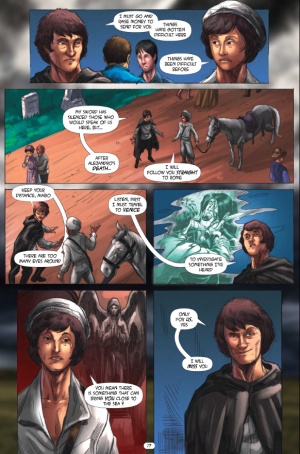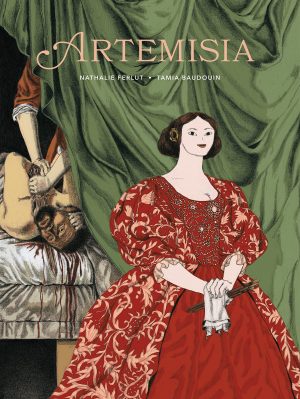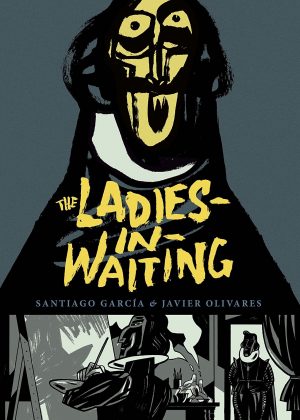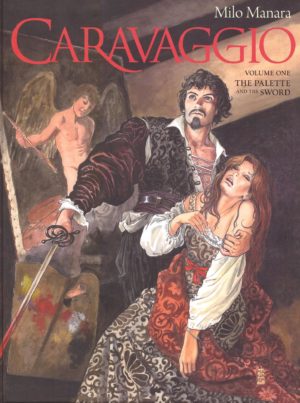Review by Frank Plowright
A Light Before the Darkness treats the tempestuous life of 17th century Italian painter Caravaggio as the basis for a sweeping period drama, beginning with his departure from Milan to avoid the church’s feared inquisition. The clever title references his style of painting while alluding to his talent within a tempestuous personality.
Anyone unfamiliar with his background although with a passing knowledge of art history may be initially be confused by references to Michelangelo, which was Caravaggio’s given name, and not in this instance the artist more famous under that name.
Ken Mora’s take on Caravaggio is a swashbuckling libertine acutely aware of his own talent and quick to resort to violence. He’s arrogant and unlikeable, which was the case, but Mora is also definitive when it comes to matters that are speculative, depicting Caravaggio as more often revelling in the attentions of men than women. There are allusions in his paintings, and less reliably accusations during his lifetime that could equally have been malicious, but Mora’s interpretation sets this as key to assorted troubles, which is viable dramatic licence.
The strictures of the period when the Catholic church retained great power are well conveyed, as are the painting techniques, incorporating current thinking that Caravaggio used mirrors and lenses in creating his work. Also good are explanations of his intentions, but clarity is sometimes lacking. This could be a casualty of transforming a screenplay into a graphic novel, by which time Mora knew his subject so well he didn’t realise information wasn’t being conveyed, particularly with regard to why people are important. The pacing is notable, rapid for most of the time, but slowed before critical incidents. Mora’s lettering, though, while at times innovative, can also be intrusive.
A difficulty any artist has when illustrating the biography of a figurative painter is the unrealistic expectation of the art matching the painter’s quality. In the case of Caravaggio that’s setting the bar unfeasibly high, yet even taking that into account Cyrus Mesarcia disappoints with too many poorly proportioned figures despite a cover painting that’s a viable pastiche. It doesn’t help that Mesarcia also sometimes uses exaggerated dramatic poses of the type seen on paintings amid what’s otherwise intended as period realism, and there are scenes where greater variety to the viewpoints would be more interesting. However, given those reservations, a lot of work went into detailed pages that convey the period, and Mesarcia packs a fast paced story with visual incident. A nice touch is the way people who financed the original publication are used as character models.
Mora ends naturally enough with Caravaggio’s death, before a few pages of explanations about narrative decisions, the choice of artist and the transformation of a screenplay into a graphic novel. Among those notes is a comment from Neal Adams noting Mora couldn’t afford to employ him as an artist on the project, but a middle ground use of a more experienced artist would have greatly benefited A Light Before the Darkness.
